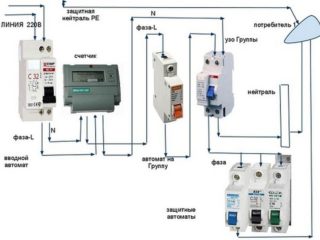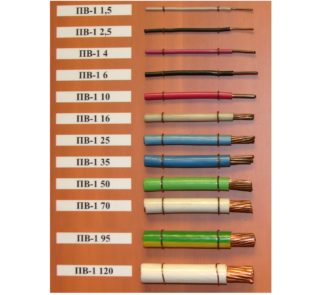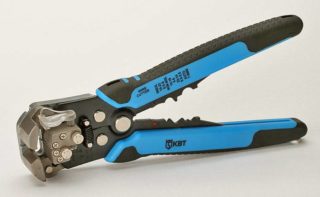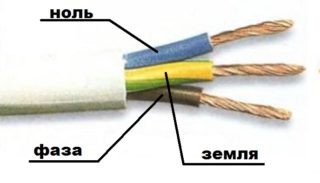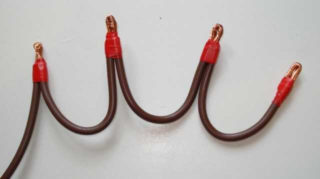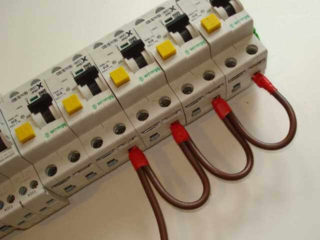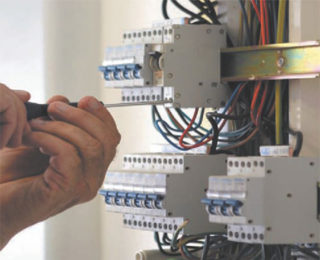The electrical panel contains switching components and automatic devices, as well as equipment for connecting and distributing consumers over the network. For the optimal fulfillment of their duties, it is necessary to choose the installation wires correctly and lay them correctly. Choosing the right conductors and the correct connection will increase the safety of the wiring and ensure its long-term functioning.
The composition of the electrical panel and its device
The electrical panel is a metal box in which there are various switching and protective devices. They are connected using wires, which are subject to special requirements.
An input cable is passed into the electrical panel through a special hole. After that, the electrical equipment is connected and the wires are laid inside the shield. Connect the conductors according to the developed scheme.
The composition of a modern home panel includes the following switching and protective devices, as well as products of a different type:
- Electricity meter.
- Automata They are put on the entrance and on separate groups of energy consumers. Usually, a circuit breaker is selected for the entrance, for the lighting group and for the powerful electrical equipment in the apartment.
- RCD
- Difavtomaty.
- Timer.
- Voltage relay and phase control.
- Other automation for control and monitoring.
The case must be grounded, as well as metal doors and live parts. Otherwise, in case of current leakage, the shield will carry a potential danger to human life and health. The shield must be locked with a key to prevent access by unauthorized persons and to prevent electric shock.
Wire selection
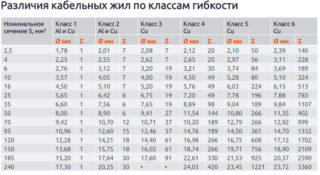 The requirements for cable products are formed from the conditions in which the product will operate. The shield is a device with limited space, therefore miniature and compactness are one of the main selection criteria. Reliability and durability is equally important for such products. The cable should bend well and withstand bending, so devices with an aluminum core are not suitable.
The requirements for cable products are formed from the conditions in which the product will operate. The shield is a device with limited space, therefore miniature and compactness are one of the main selection criteria. Reliability and durability is equally important for such products. The cable should bend well and withstand bending, so devices with an aluminum core are not suitable.
All conductors can be divided into classes of flexibility. This indicator depends on the design of the cores. The higher the class, the more flexible the conductor. Monolithic cores are difficult to bend and can break during operation, but they are easy to connect to the terminals. Multi-wire products are better bent, easier to work with, but the difficulty lies in the inability to connect to terminals and screw terminals. To do this, you either have to tin the ends, or compress them with special tips. Otherwise, the contact will be unreliable and will not last long. The choice of stranded or solid wire also depends on the flexibility class of the product.
For all the above characteristics, you can select a number of wires that are suitable for inclusion. These include:
- PV-1. This is a single-wire copper core product that has a single layer of PVC insulation. Flexibility class 1.
- PV-3. A stranded conductor with copper conductors, having PVC insulation with a 2 class of flexibility (for cross section from 0.5 sq. Mm to 1.5 sq. Mm.), 4 class with a cross section from 2.5 to 4 sq. Mm. and 3 class of flexibility for sections over 4 sq. mm.
- PV-4. Stranded copper cable with PVC insulation. It is a more flexible analogue of previous products. Flexibility class 4 and 5.
You can pick up foreign analogues of wires.These include H05VJ, H07VK, designed for voltages of 0.5 and 0.75 kV, respectively.
When choosing, you need to decide what section of the wire to do the wiring in the shield. This directly depends on the load in the room. It is recommended to take a wire for connection with the same cross-section as the power cable. To connect an electric meter, cable products with a cross section of 25 sq. Mm are used. But you need to take into account another indicator - the maximum current strength for which the electric meter is designed. Depending on the brand, this is 50-60 Amps, which corresponds to 10-12 kW. According to these criteria, a copper conductor with a cross section of 10-16 square mm is suitable. or aluminum wire, in which the cross section will have to be increased to 16-25 square mm.
It is important to pre-calculate the cross-section of the wire for installation in electrical panels for connecting automatic machines and length. Lean in the calculations should be on the introductory machine.
Necessary tools
To reliably make the connection in the shield, you need to purchase special tools in advance. They must be professional and have insulated arms. Mandatory tools include:
- Hammer drill.
- Bulgarian.
- Screwdrivers, including indicator screwdriver for checking the absence of voltage on the wires.
- A knife.
- The device for stripping insulation.
- Pliers.
- Nippers.
- Portable lamp.
After preparing the tool, you can proceed with installation.
Assembly and connection
Before starting work, it is necessary to disconnect the room. Using a tester, it is checked whether the voltage on the conductors remains. Probe screwdrivers need to alternately touch each core. If the light does not come on, you can begin to work. It is forbidden to work with the electricity turned on. It is also important to prepare the tools in advance and provide the wizard with an autonomous light source.
When connecting the wires in the shield, it is important to remember that the colors of the cores show their purpose. The core can be completely painted in one color or another or have a color mark at the entrance to the device, that is, at the ends of the conductor. The following gamma is used:
- Phase - gray, black.
- Zero is blue.
- Grounding is yellow-green.
The wire for mounting the electrical panel must be laid in such a way that there are no sagging or excessive bends. For this, the length of each segment with a small allowance of 2-3 cm is determined in advance.
All connections to the machine are made using jumpers. For this purpose, a single-wire hard wire can be used. If possible, it is better not to use jumpers, but to do everything through the connecting core. Thanks to her, the contact will be reliable, and the appearance will be aesthetic.
It is not recommended to connect more than two wires in one block. If this cannot be avoided, the cables must have the same cross section.
Jumper preparation and wiring diagram
Conductors must be prepared for connection in the shield. To do this, clean the ends of the insulation with a knife or a special tool. The cores should be inserted into the contact and tightened securely with a screwdriver.
During operation, you need to monitor the following:
- The insulation must not fall into the clamp.
- The exposed part of the wire should not protrude from the contact to a large area. Such a requirement is made by network organizations that are engaged in sealing meters. This helps prevent illegal connections from the outside.
- First, the upper screw is tightened, then the lower one.
The last step is to check the reliability of the fixation. Veins need to be carefully touched and spread apart. The conductor should not swing and stagger.
Next, you need to connect the neutral wire. It is connected with a jumper from the lower right contact of the automatic bipolar switch to the third contact of the meter. The ends also need to be cleaned from insulation, connected and tightened with screws.Wires should not touch each other. Be sure to make a gap between them.
Now you need to connect the outgoing wires from the meter. First, the phase is connected via a jumper to the upper contact of the machine. The ends are stripped and joined. The phase also needs to be distributed between other sources in the directions of the machines.
There should be one contact with the electricity meter in the apartment. This is the outgoing zero contact that should connect to the zero bus. Usually it comes with a plastic box. Length, dimensions and configuration vary by manufacturer.
Basic Wiring Rules
All of the above actions should be performed in accordance with the rules adopted by the EMP. Failure to comply may result in negative consequences, including electric shock and a possible short circuit.
Primary requirements:
- The entry plate, junction boxes, meter should be mounted in easily accessible places.
- The wires should not intersect, there must be a distance between them.
- The cross section of the wire in the shield for connecting machines, RCDs and other products is selected depending on their current load.
- A layout plan for the conductors should be created.
- Wires should not touch metal parts and structural elements.
- All connections in the junction box must be securely insulated.
- Protective and neutral wires are attached to the devices using a bolted connection.
During operation, be sure to follow safety precautions. The master must be wearing protective dielectric gloves and glasses.
